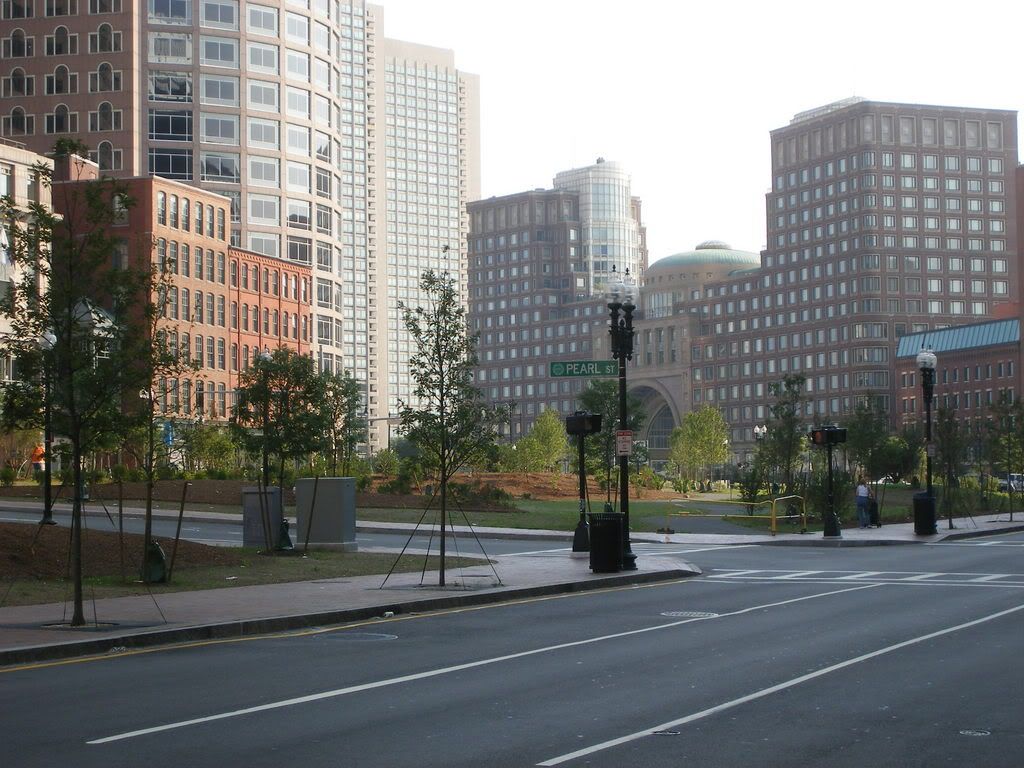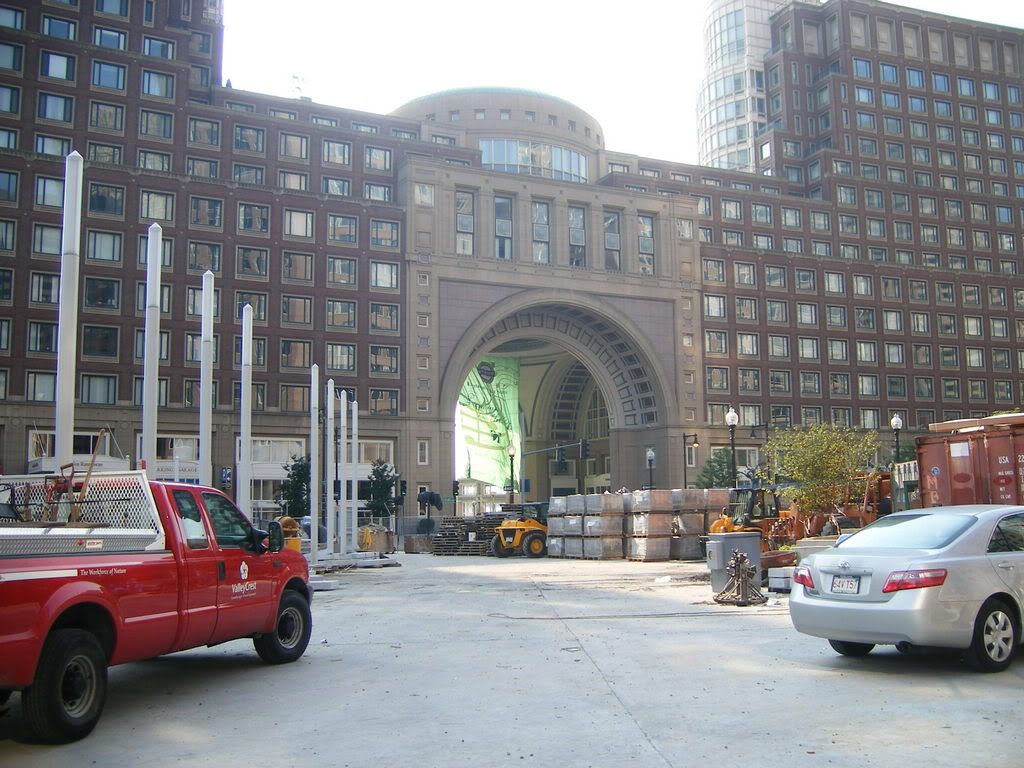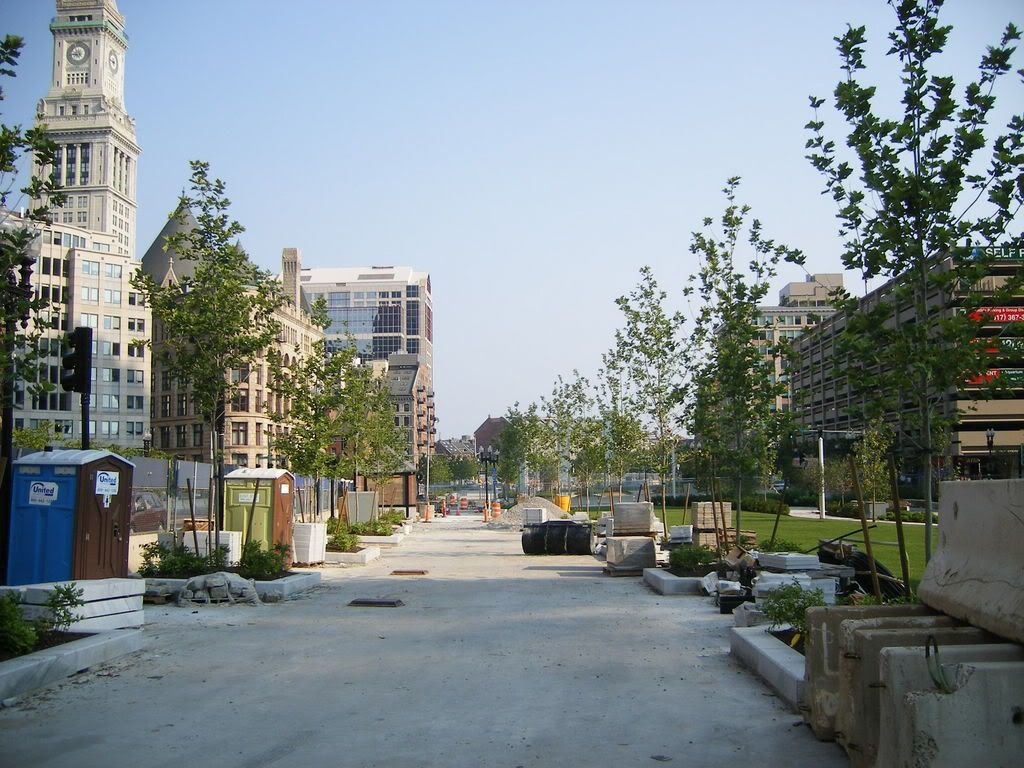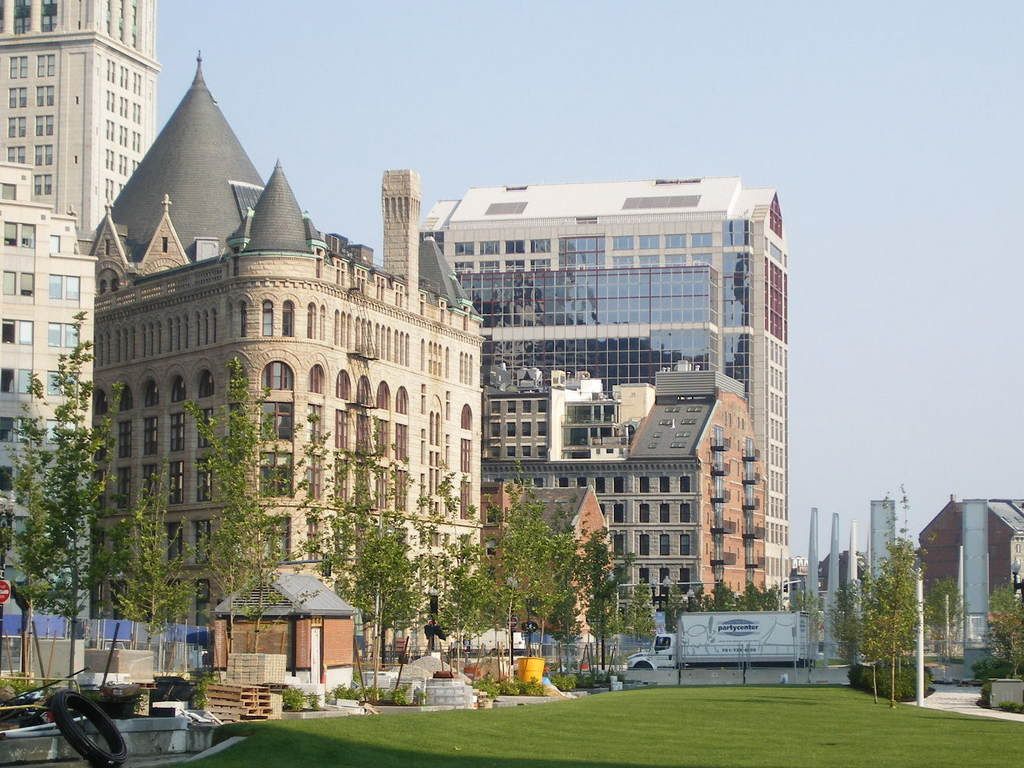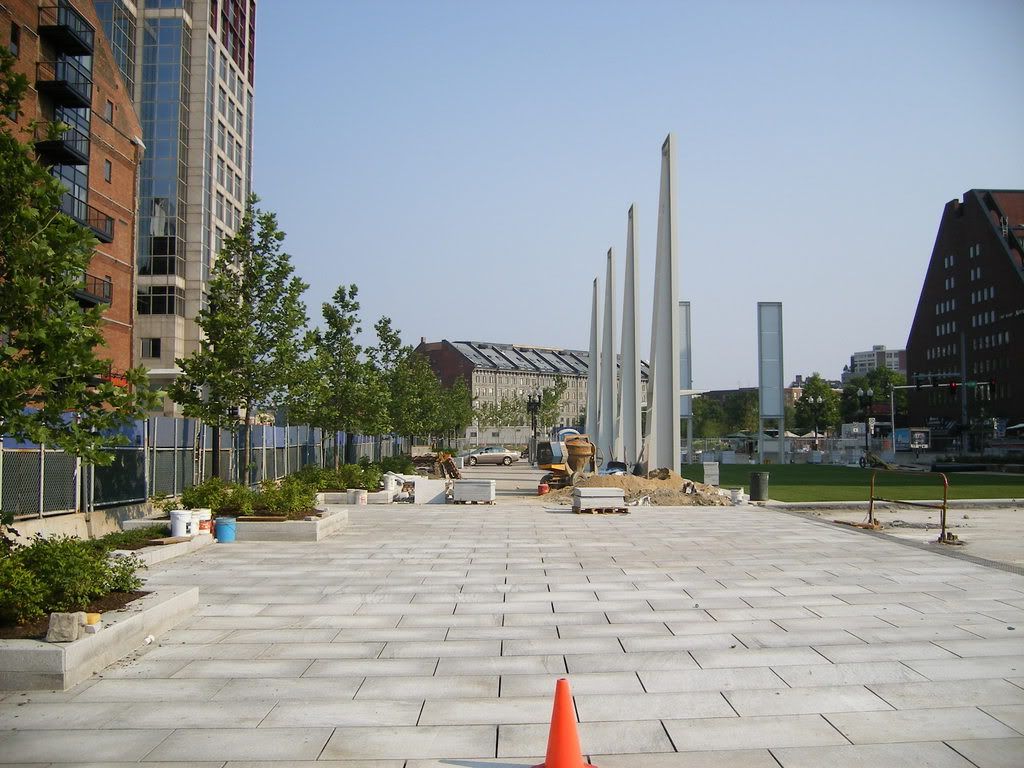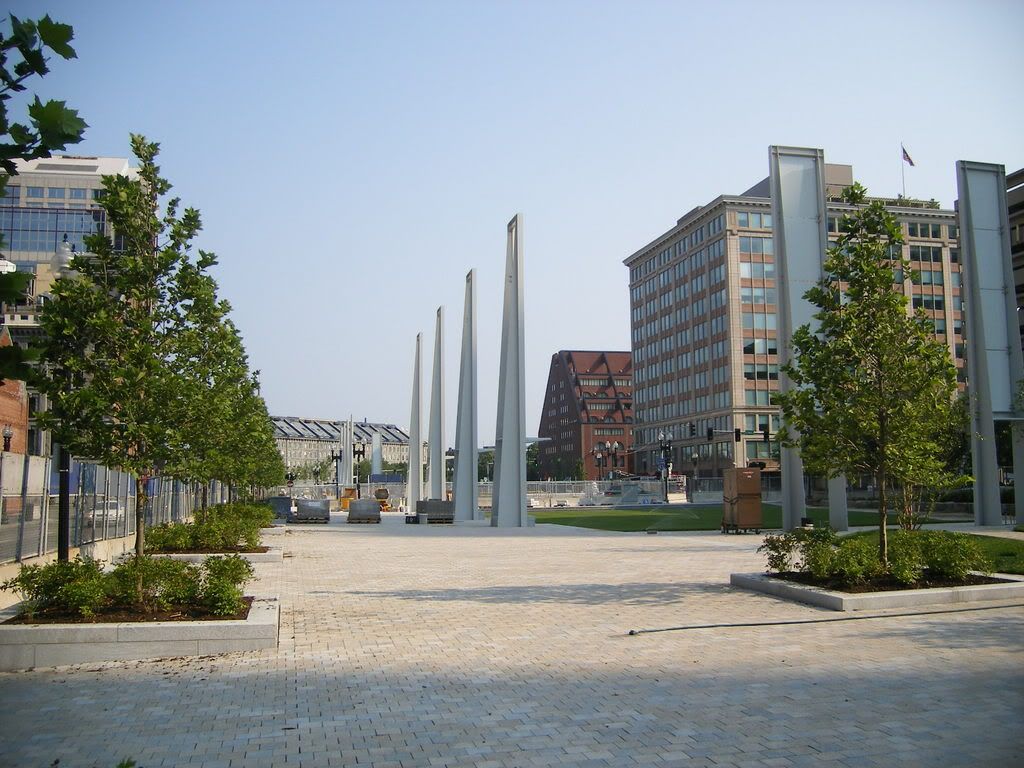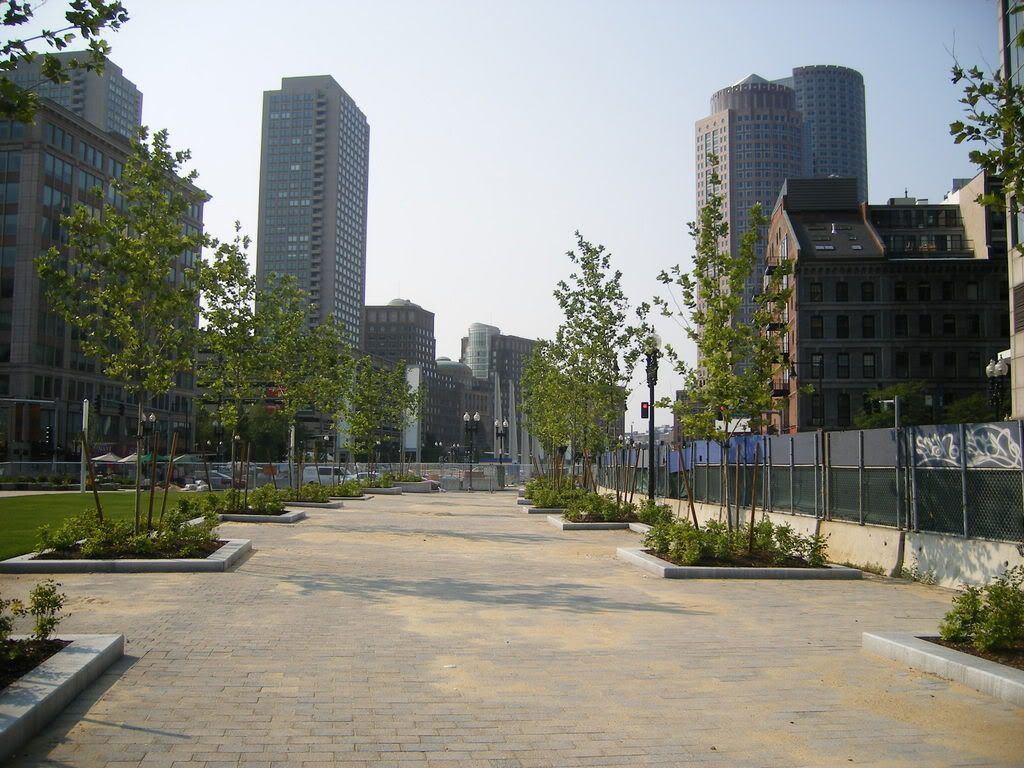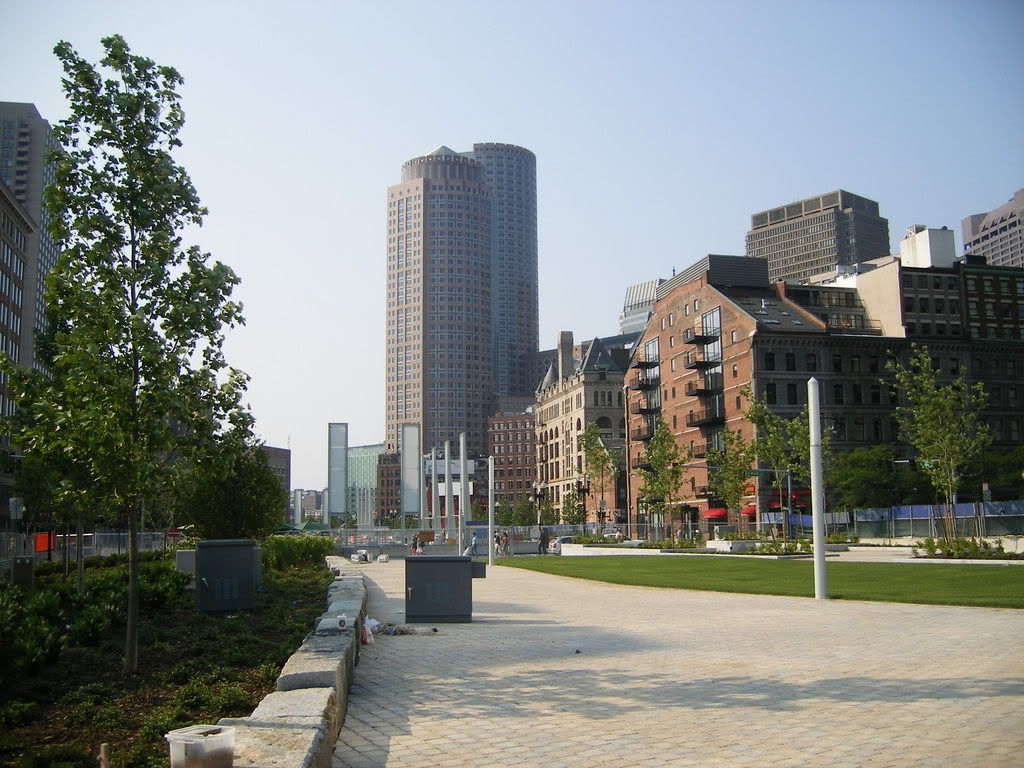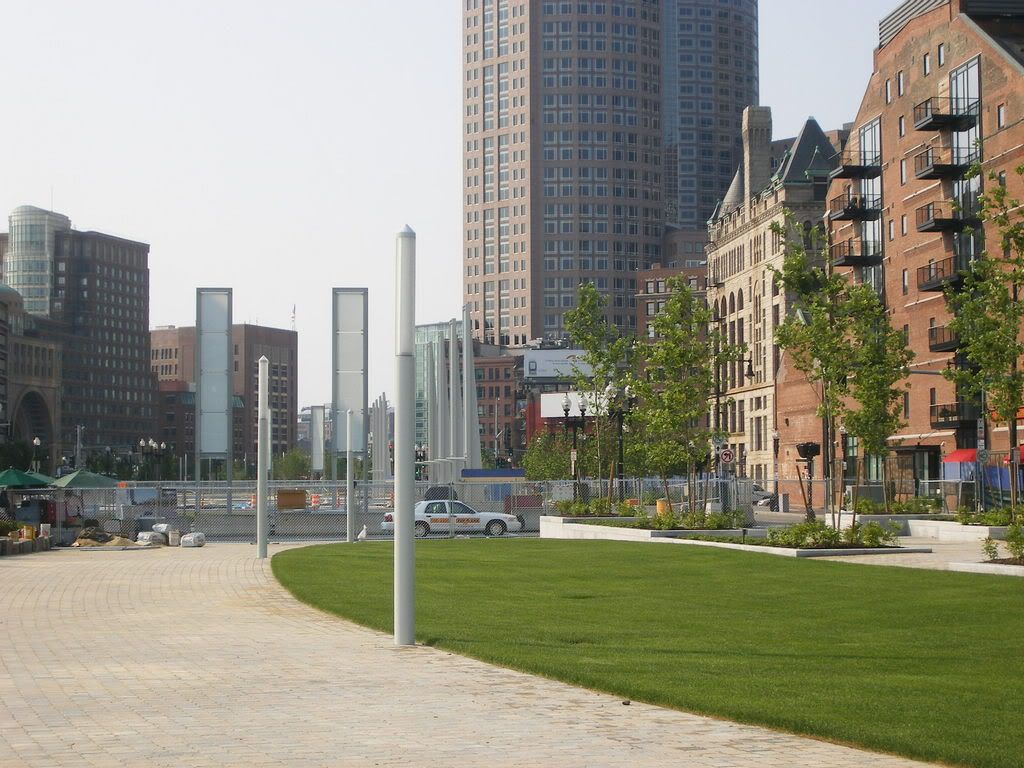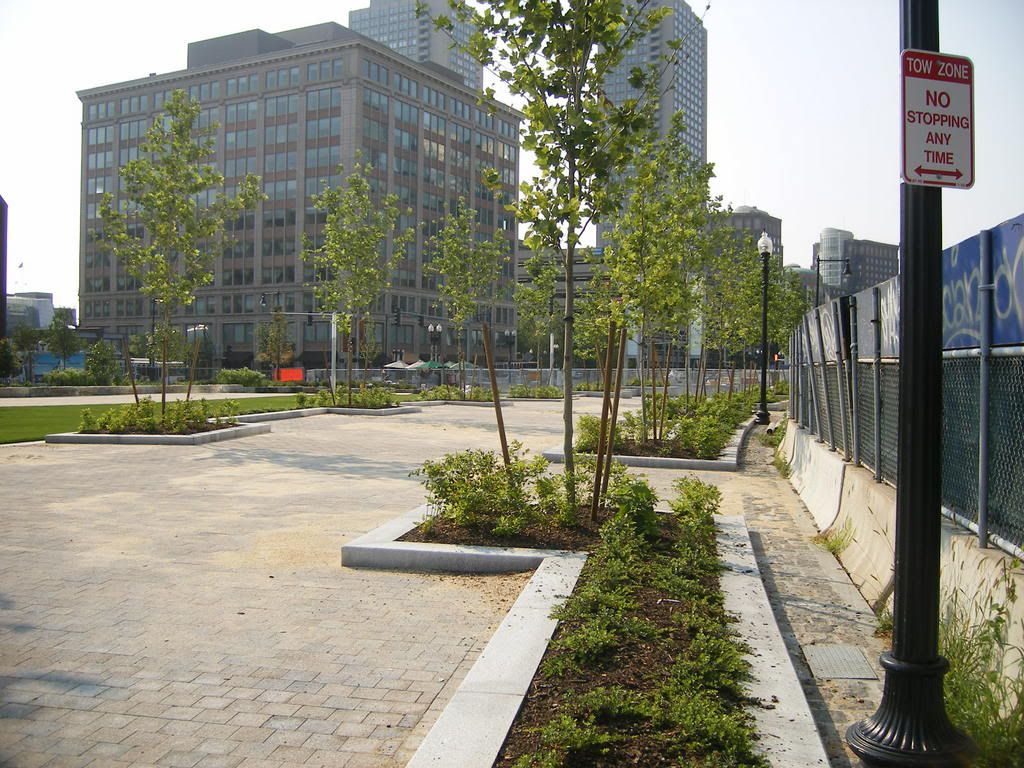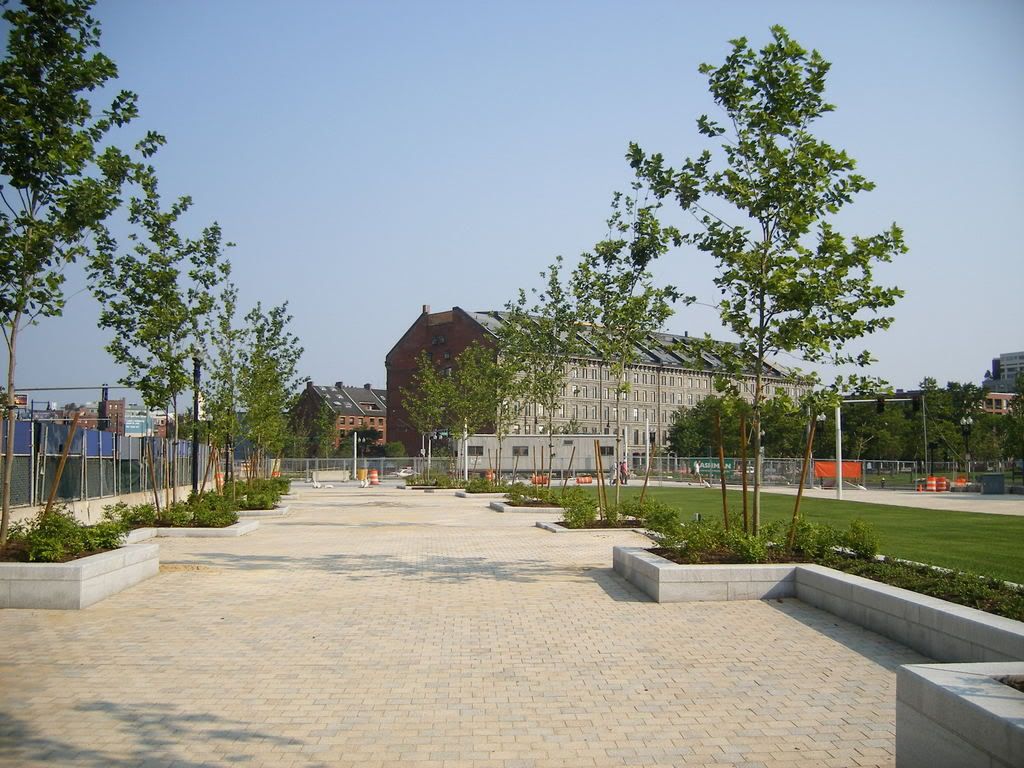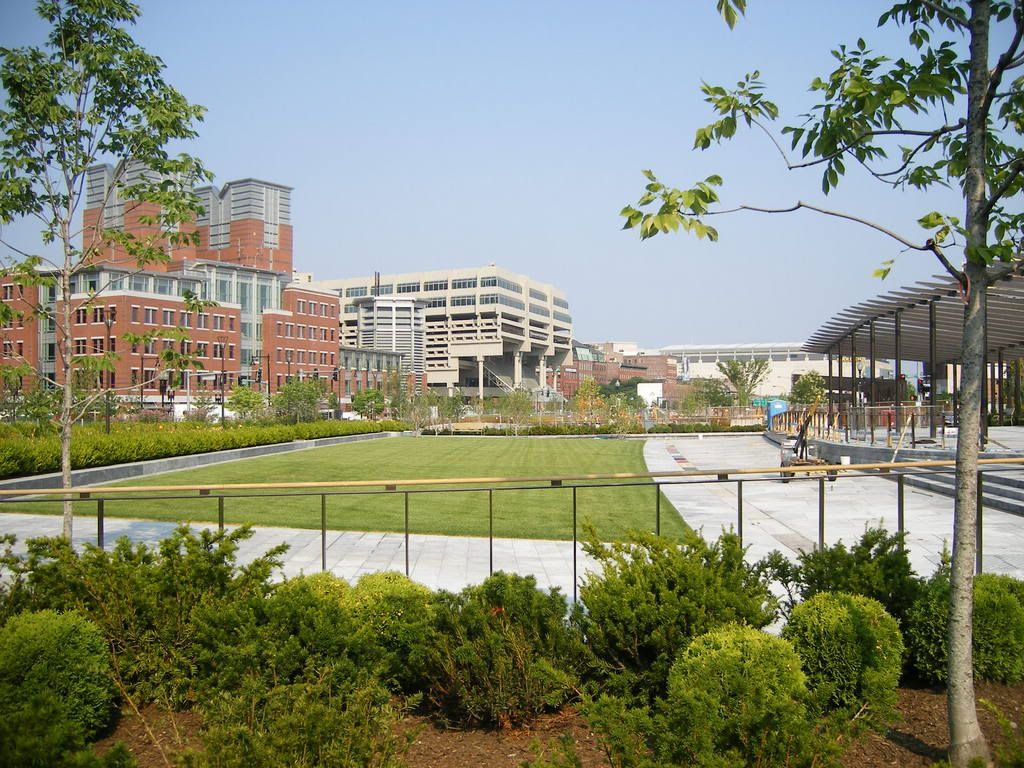If you were to close your eyes and randomly place the greenway anywhere in Boston proper it would, due to its sheer size, have to come in contact with various neighborhoods/places. This doesn't mean that this is a logical way to connect these places or that the places are noteworthy enough to warrant an open space to connect them in the first place; and the connections in this case are dubious at best. To say that something connects one place to another because it touches each is a stretch. The greenway may come in contact with the North End and Chinatown, but it's no way to go between the two unless you don't know where you're going. Furthermore, if you think the greenway connects neighborhoods/places, keep in mind that these places would otherwise be connected seamlessly if it were not for the expressway, that the footprint of this greenway is a constant reminder of.
There was no thought behind where to locate open space, or even its dimensions...it didn't necessarily make sense to create open space here, it just came available. The author is just asking that in the future we actually plan constructive open spaces.
There was no thought behind where to locate open space, or even its dimensions...it didn't necessarily make sense to create open space here, it just came available. The author is just asking that in the future we actually plan constructive open spaces.

